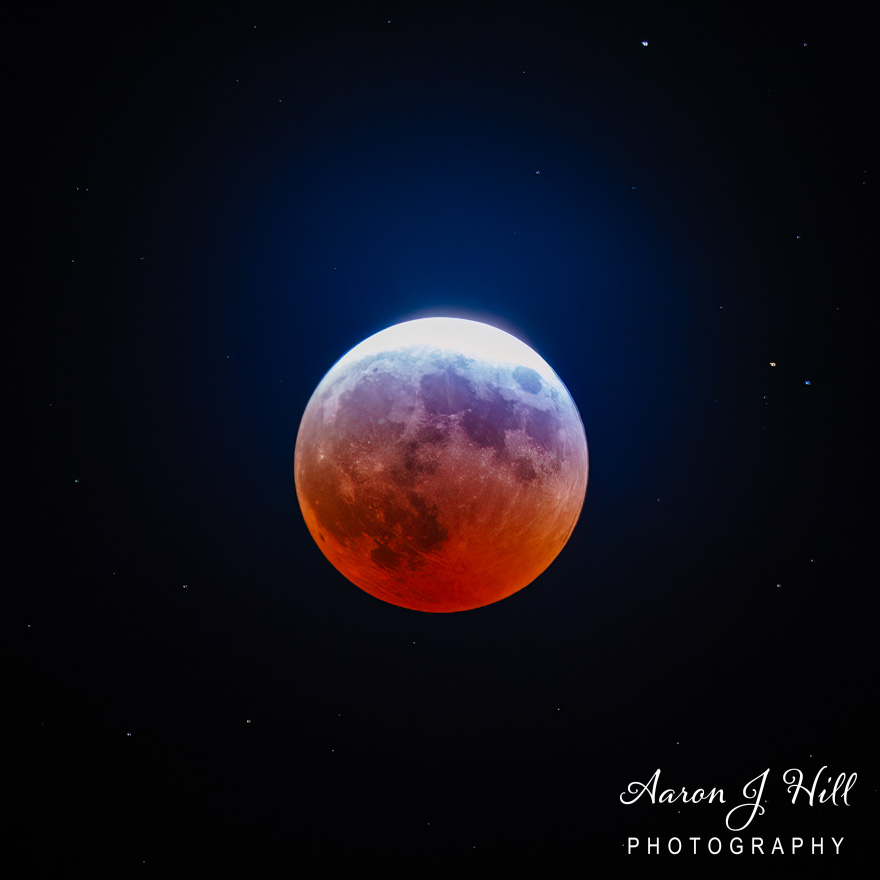A Blood Moon is one of the most breathtaking celestial events. On March 14, 2025, the night sky came alive as the Earth’s shadow fully covered the Moon, turning it a deep shade of red. This total lunar eclipse was a mesmerizing sight for sky-watchers and photographers alike.
What Causes a Blood Moon?
A Blood Moon occurs during a total lunar eclipse when the Earth moves directly between the Sun and the Moon. Instead of going completely dark, the Moon takes on a reddish hue. This happens because Earth’s atmosphere filters sunlight, allowing only red and orange wavelengths to reach the Moon. The result is a glowing red Moon that captivates viewers across the world.
The Science Behind the Red Glow
The red color of a Blood Moon is due to a phenomenon called Rayleigh scattering. This is the same process that makes sunsets and sunrises appear red. When sunlight passes through Earth’s atmosphere, shorter wavelengths like blue and violet scatter in all directions. Longer wavelengths, like red and orange, bend around Earth and illuminate the Moon during the eclipse.
The March 14, 2025, Total Lunar Eclipse
This particular total lunar eclipse was visible in many parts of the world. Clear skies allowed photographers to capture the event in stunning detail. The Moon appeared to shift through different shades of copper, crimson, and deep orange as Earth’s shadow moved across its surface.
Some highlights of this eclipse included:
- Totality Duration: The Moon remained completely covered for over an hour, creating ideal conditions for viewing and photography.
- Brightness Variation: Depending on atmospheric conditions, some areas saw a darker or lighter red hue.
- Star Visibility: With the Moon dimmed, more stars became visible in the background, enhancing astrophotography compositions.
Symbolism and Cultural Significance of a Blood Moon
Throughout history, Blood Moons have been linked to myths, prophecies, and legends. Many ancient cultures viewed them as omens of change or significant events. Some saw them as warnings, while others interpreted them as a time for reflection and renewal.
In modern times, a total lunar eclipse is seen as a moment of wonder and scientific curiosity. It reminds us of Earth’s place in the vast universe and the beauty of celestial mechanics.
Capturing the Blood Moon in Photography
Photographing a total lunar eclipse requires planning, patience, and the right equipment. Here are some tips for capturing stunning images of a Blood Moon:
1. Use a Telephoto Lens
A long lens (300mm or more) helps zoom in on the Moon’s details, revealing its craters and surface textures.
2. Adjust Camera Settings
- Aperture: Use a wide aperture (f/5.6 or lower) to let in more light.
- Shutter Speed: Start with 1/125s and adjust as needed to avoid motion blur.
- ISO: Increase ISO (400–1600) to compensate for low light without introducing too much noise.
Stabilize Your Shot
A sturdy tripod prevents camera shake, ensuring sharp images. A remote shutter release or timer can further reduce vibrations.
Use Manual Focus
Autofocus may struggle in low light. Manually focus on the Moon’s edge for crisp, clear details.
Experiment with Composition
Including stars, landscapes, or silhouettes can add depth and uniqueness to your Blood Moon shots.
Where and When to See the Next Blood Moon
If you missed the March 14, 2025, lunar eclipse, don’t worry! There are more Blood Moons coming in the next few years. To catch the next one, check astronomy calendars and plan ahead for clear skies and ideal viewing locations.
Conclusion
A Blood Moon is a rare and beautiful event that showcases the wonders of our universe. Whether you’re a photographer, a stargazer, or just someone who enjoys celestial spectacles, a total lunar eclipse is a sight to behold.



